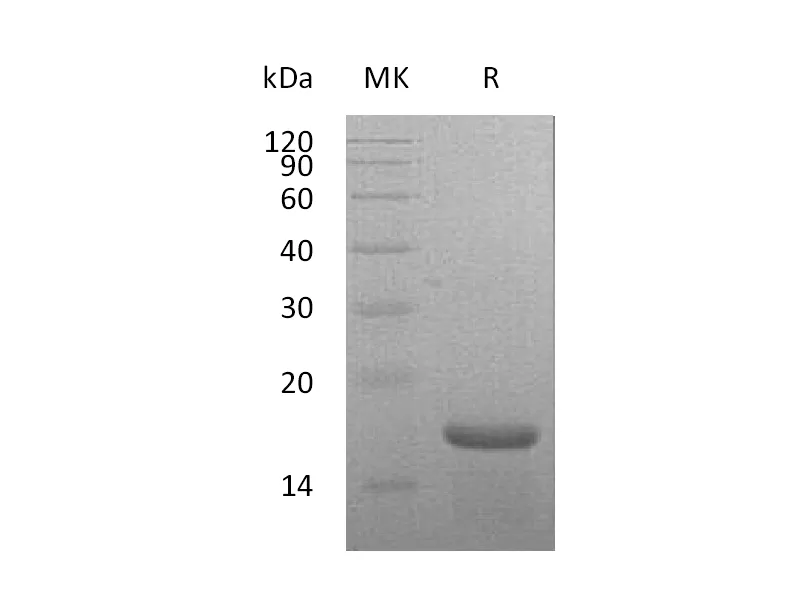
Size2:50μg price2:$465
Size3:500μg price3:$2325
| Name | Recombinant Mouse IL-21 (N-6His) |
| Purity | Greater than 95% as determined by reducing SDS-PAGE |
| Endotoxin level | <1 EU/µg as determined by LAL test. |
| Construction | Recombinant Mouse Interleukin-21 is produced by our E.coli expression system and the target gene encoding Pro25-Ser146 is expressed with a 6His tag at the N-terminus. |
| Accession # | Q9ES17 |
| Host | E.coli |
| Species | Mouse |
| Predicted Molecular Mass | 16.5 KDa |
| Buffer | Lyophilized from a 0.2 μm filtered solution of 20mM Histidine-HCl, 6% Sucrose, 2% Glycine, 50mM NaCl, 0.05% Tween 80, pH 6.5. |
| Form | Lyophilized |
| Shipping | The product is shipped at ambient temperature.Upon receipt, store it immediately at the temperature listed below. |
| Stability&Storage | Lyophilized protein should be stored at ≤ -20°C, stable for one year after receipt. Reconstituted protein solution can be stored at 2-8°C for 2-7 days. Aliquots of reconstituted samples are stable at ≤ -20°C for 3 months. |
| Reconstitution | Always centrifuge tubes before opening.Do not mix by vortex or pipetting.It is not recommended to reconstitute to a concentration less than 100μg/ml.Dissolve the lyophilized protein in distilled water.Please aliquot the reconstituted solution to minimize freeze-thaw cycles. |
Alternative Names
Interleukin-21;IL-21;IL21;Il21
Background
Interleukin-21(IL-21) is an approximately 14 kDa cytokine which belongs to the IL-15/IL-21 family. Mature mouse IL-21 shares 66%,59%, 58%, and 88% aa sequence identity with mature canine, human, rabbit, and rat IL-21, respectively. IL-21 is produced by activated T follicular helper cells (Tfh), Th17 cells, and NKT cells. It exerts its biological effects through a heterodimeric receptor complex (IL-21 specific IL-21 R). IL-21 is a cytokine that has potent regulatory effects on cells of the immune system, including natural killer (NK) cells and cytotoxic T cells that can destroy virally infected or cancerous cells. This cytokine induces cell division/proliferation in its target cells. It is required for the migration of dendritic cells to draining lymph nodes .It co‑stimulates the activation, proliferation, and survival of CD8+ T cells and NKT cells and promotes Th17 cell polarization. It blocks the generation of regulatory T cells and their suppressive effects on CD4+ T cells.
Note
For Research Use Only , Not for Diagnostic Use.
